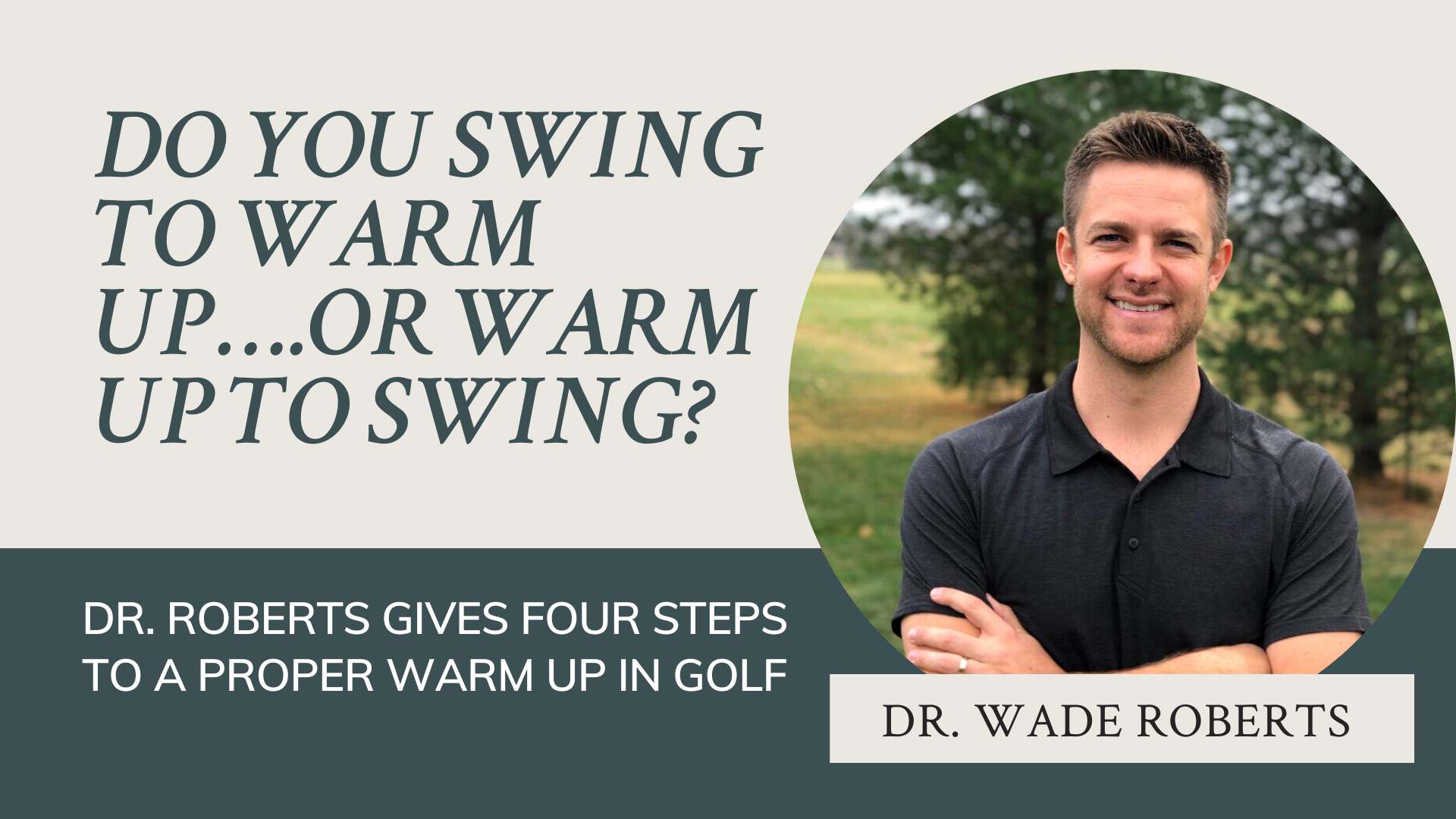The goal of a warm-up: is to prepare the golfer mentally and physically for the demands of a 9 or 18-hole round.
Traditionally, an effective warm-up has also been thought to decrease the risk of injury. While this remains unclear, there is plenty of evidence to suggest that a positive effect may exist. Recent evidence is suggesting, however, that a well-designed warm-up can actually result in a number of physiological responses that can potentially increase subsequent performance on the golf course.
A couple of positive effects and how it relates to golf from a well-designed warm-up:
- Faster muscle contractions = increased speed –> increased distance
- Improvements in rate of force development = increased power –> increased distance
- Lowered viscous resistance in muscles and joints = increased mobility –> increased turn
- Improved oxygen delivery and blood flow = decreased stiffness to muscles and joints –> increased turn
- Increased psychological preparedness for performance (Don’t underestimate the game between the ears!)
What should a golf warm-up consist of?
- Part 1 = 5 minutes of slow aerobic activity
- The aim of this is to increase heart rate, blood flow, muscle temperature, and decrease viscosity of joint fluids
- Examples: If your longest walk is from the parking lot to the golf cart and then to the driving range (or worse straight to the first tee) that most likely isn’t long enough. Get creative, take the long way to the clubhouse from the parking lot…walk up a steep hill near the putting green is a fast way to get the heart rate going and blood flow pumping
- Part 2 = 5 minutes of general stretching
- The aim of this is to replicate the ranges of motion required for the upcoming activity – a.k.a. full turn
- In the game of golf, there are 4 areas you need to be able to rotate well in – in this HOME ASSESSMENT GUIDE I go into detail about these 4 areas. A good warm-up doesn’t have to be long if you do it specifically for the game of golf.
- Part 3 = 10 minutes of hitting balls
- What’s the best order of clubs to use or how many balls should you hit to be ‘warmed up’?
- While this varies from person to person depending on many factors, a general rule of thumb is 7,7,7
- 7 shots with a wedge-9iron, 7 shots with a 7-5iron, and 7 shots with a 3wood-driver
- Why 20+ balls?
- Maybe this is experience talking, but after watching a lot of golfers hit balls on golf simulators and Trackman, most golfers hit their ‘average/top’ club head speed between balls 20-30.
- Very few players, regardless of how in shape they are, can step right up and reach the higher end of their club head speed without an appropriate amount of swings
- Part 4 = 5 minutes of chipping and putting
- You know this is where the strokes add up…chip a few to get your feel going and then putt a few to get the speed of the greens and boost your confidence in seeing a few putts go in
**(Note: a warm-up should end no more than 15 minutes before the start of the first swing)
Take Home = You can do the math…but YOU HAVE TO GET TO THE COURSE EARLY.
- This takes discipline
- We’ve all done it where we’re flying out of the office or house to catch a tee time. Obviously, life happens and you’re going to go from ‘trunk to tee’ every now and then. But don’t make it a habit. Discipline yourself and your game to get to the course early
- 10:00 am Tee Time Example
- 9:50 – 10:00 – Show up to the first tee to check in/get the bets lined up
- 9:30 – 9:50 – Complete Parts 2-4 in the practice area (Note: Parts 3 and 4 can be reversed based on preference)
- 9:15 – 9:25 – Park, 5 min of aerobic activity, golf shoes on, check-in, go to the bathroom, get your clubs, etc.
So on your next round of golf, try showing up to the course 45 minutes minimum before your round of golf. Be ready to go on the first tee, not the 5th after you’ve ‘loosened up’.
Click Here to Set Up a Call
Dr. Wade Roberts is a contributing writer for Central Links Golf. Dr. Roberts is the owner of Roberts PT, a golf PT and Performance Center in Kansas City. He graduated from Liberty University with a Bachelor of Science Degree in Kinesiology. He then earned his Doctor of Physical Therapy from Lynchburg College. Dr. Roberts is able to provide specialized therapies for a variety of patients but has a special interest in decreasing pain, increasing speed, and achieving longevity in the golf community.
